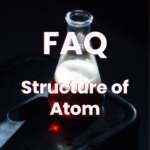
Organic Reactions


Bouveault Synthesis
The Bouveault synthesis, named after the French chemist Louis Bouveault, is a method for the reduction of esters to primary alcohols using sodium metal in the presence of an alcohol solvent. The reaction proceeds via a radical mechanism and is useful for the preparation of primary alcohols, particularly those that are difficult to obtain by…



Beckmann Rearrangement
The Beckmann rearrangement is a chemical reaction that converts oximes into amides, lactams, or hydroxamic acids, depending on the reaction conditions and the structure of the starting oxime. It is named after the German chemist Ernst Otto Beckmann, who first described the reaction in the early 20th century. The general reaction scheme for the Beckmann…

Barton-McCombie Deoxygenation
The Barton-McCombie deoxygenation, also known as the Barton-McCombie reaction, is a chemical reaction used in organic synthesis to selectively remove oxygen functional groups, such as alcohols or ethers, from organic molecules. The reaction was developed by Derek H. R. Barton and Stuart McCombie in the 1970s. The general reaction scheme for the Barton-McCombie deoxygenation is…

Balz-Schiemann Reaction
The Balz-Schiemann reaction, also known as aryl diazonium salt decomposition, is a chemical reaction used to replace a diazonium group (RN2+) with a halogen atom on an aromatic ring. It is named after the German chemists Balz and Schiemann, who first described the reaction in the early 20th century. The general reaction scheme for the…








